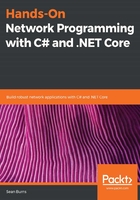
The impact of device-agnosticism
When we talk about device-agnosticism, we assume our software is not given information about which resources we expect to be available are actually available. So, going back to the example of my computer as a distributed system that is not a network, I can reliably write local programs that print or draw information to a screen. Because the program is executed locally, I can trust that my operating system will take responsibility for acquiring the connection to my monitor and transmitting the data from my program's stack frame to the monitor's display port connection.
The monitors are resources that are not inherent to the distributed system; I can technically execute any series of commands on my computer without a monitor. It's not essential for the system to function, even if it is essential for the system to function in a way that is decipherable to me. However, I can reliably assume that if the monitors are present on the system, my software will have access to them, because my operating system acts as an intelligent broker of requests between those peripherals. It will always have, and be capable of delivering, information about the status of any peripherals that my software needs to use.
As soon as my software needs to access resources distributed on a network, however, I can no longer make assumptions about the availability of those resources. That's the crux of device-agnosticism and how it impacts networked programs. Where the operating system of my computer served as an intelligent broker, we cannot assume the same of a network. So, verifying the presence of resources, and our ability to access them, becomes a key component in the design of our software. And I'll note that this task becomes more challenging when we have multiple devices on our network that could provide the resources we're looking for.
In that case, it's the responsibility of some software on the network to determine which specific device ultimately services our software's request for that resource. Whether that work is done by our own program as part of its communication algorithm, or handled by some other intelligent broker deployed to the network to facilitate this situation, the work needs to be done for our software to behave reliably on such a network.